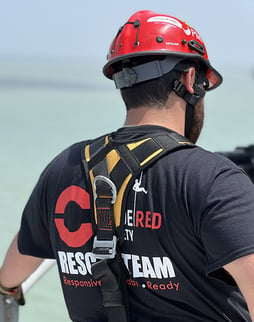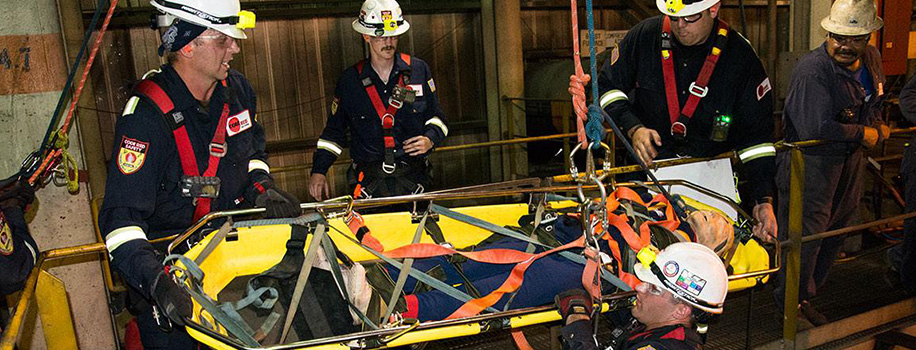Specialized operations require special procedures, equipment and training. Your technical rescue team must be certified experts in order to conduct a safe rescue in complex operational environments.

A technical rescue incident is possible at almost any worksite and ensuring the right response team is available to take action is vital. It could be that an employee falls from height to a precarious position. Or that they lose consciousness in a confined space and need evacuation. Is your technical rescue team ready to deal with these incidents?
There’s no overstressing the value of having specialists trained to respond to high-risk incidents—it’s essential to workplace safety.
With that in mind, let’s explore the most frequent types of technical rescue and how to choose a team with the knowledge, skills and abilities to succeed.
Determine The Skills That Are Required
Many job sites are hazardous. A technical rescue team could find itself responding to emergencies involving a confined space, steep incline, unstable trenches and other dynamic situations.
Technical Rope Rescue
Technical rescue teams apply their rope skills during incidents to hold the partial or total weight of rescuers and subjects. If a response team uses ropes to resolve an incident, it is considered a rope rescue.
Ropes may be required around open or confined spaces, within or outside structures.
For example, accessing a mountainside incident site or removing a worker from a difficult-to-reach location such as a deep ditch, scaffolding or bridge framework.
A rope rescue team must be adept with specialized equipment such as kernmantle ropes, harnesses, pulleys, carabiners, anchors, mechanical advantage systems, basket stretchers and ascent/descent control devices.
Confined Space Rescue
A confined space is not intended for continuous occupancy. It has restricted openings for entry and exit and poor ambient ventilation. These areas have atmospheric and physical hazards. Technical rescue teams may face toxic gases or flammable vapors. They may also risk falls during access and egress, or engulfment during a structural collapse.
Rescuers should be trained to handle:
- SCBA or SABA
- Fall protection gear
- Body harness
- Tripod or davit system
- Kernmantle ropes
- Air quality monitors
- Anchor devices
- Communication gear
Having eyes inside the work area helps ensure workers get a rapid rescue if necessary.
Code Red Safety bolsters confined space safety with the RED i/O Monitoring system. With atmospheric monitoring, AI and infrared camera technology, RED i/O makes it easier for a technical rescue team to remain accountable for all confined space personnel.
High-Angle Rescue
A technical rescue team in a high-angle situation—sloped greater the 60 degrees—relies entirely on ropes to keep from falling. Worksite examples include towers, cranes, shafts, ship holds, piping, sewers and excavations.
Like rope rescue, the team must know how to respond to complex falls from height, shock loading (sudden stops) and confined spaces.
 Examine The Technical Rescue Team’s Qualifications
Examine The Technical Rescue Team’s Qualifications
More and more industries are enforcing the need for up-to-date rescue abilities and higher levels of training. The skills required are intense, as is the demand for real-world experience.
The desired rescuer qualifications will depend on the type of technical hazards identified at your job site. It’s safe to say that an aptitude for problem-solving, situational awareness and working under pressure is required. Additional proficiencies may include:
- Incident command
- Resource management
- Hazard detection & control
- Scene assessment
- Victim management
- Helicopter rescue
- Knots, rigging, belay, hauling
- Equipment upkeep
- Debrief & reporting
Get A Safety Partner Who Supports You
Occupational health and safety partners like Code Red can help you plan and implement technical rescue operations. However, the critical question for organizations needing professional guidance is how to recognize and choose a top-quality provider.
The first step is clarifying your safety needs so your partner can help assemble a suitable technical rescue team. You’ll want to verify the rescue team’s qualifications and training and check their references. After all, your employees’ safety and protection hinge on these specialists’ skills.
